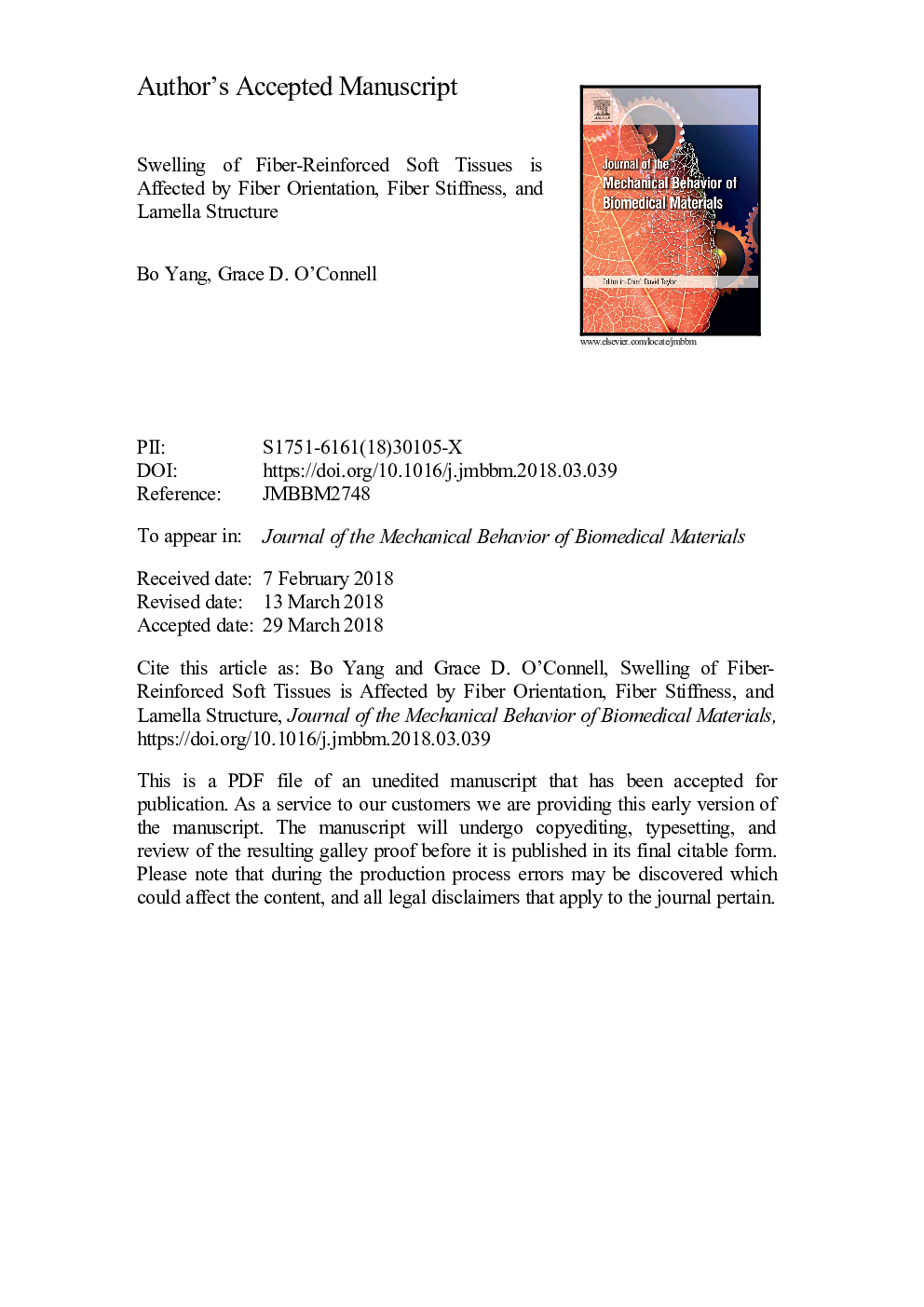| کد مقاله | کد نشریه | سال انتشار | مقاله انگلیسی | نسخه تمام متن |
|---|---|---|---|---|
| 7207080 | 1469063 | 2018 | 38 صفحه PDF | دانلود رایگان |
عنوان انگلیسی مقاله ISI
Swelling of fiber-reinforced soft tissues is affected by fiber orientation, fiber stiffness, and lamella structure
ترجمه فارسی عنوان
تورم بافت های نرم با فیبر تقویت شده تحت تاثیر قرار گیری جهت فیبر، سختی فیبر و ساختار لاملا است
دانلود مقاله + سفارش ترجمه
دانلود مقاله ISI انگلیسی
رایگان برای ایرانیان
کلمات کلیدی
بافت نرم نرم تقویت شده با فیبر، ورم، جهت گیری فیبر، دیسک بین مهره ای،
موضوعات مرتبط
مهندسی و علوم پایه
سایر رشته های مهندسی
مهندسی پزشکی
چکیده انگلیسی
Native and engineered fiber-reinforced tissues are composites comprised of stiff collagen fibers embedded within an extrafibrillar matrix that is capable of swelling by absorbing water molecules. Tissue swelling is important for understanding stress distributions between collagen fibers and extrafibrillar matrix, as well as for understanding mechanisms of tissue failure. The swelling behavior of fiber-reinforced tissues in the musculoskeletal system has been largely attributed to the glycosaminoglycan content. Recent work demonstrated anisotropy in the swelling response of the annulus fibrosus in the intervertebral disc. It is well known that collagen fiber orientation affects elastic behavior, but the effect of collagen fiber network on tissue swelling behavior is not well understood. In this study, we developed three series of models to evaluate the effect of collagen fiber orientation, fiber network architecture (i.e., single or multi-fiber families within a layer), and fiber stiffness on bulk tissue swelling, which was simulated by describing the extrafibrillar matrix as a triphasic material, as proposed by Lai et al. Model results were within one standard deviation of reported mean values for changes in tissue volume, width, and thickness under free swelling conditions. The predicted swelling response of single-fiber family structures was highly dependent on fiber orientation and the number of lamellae in the bulk tissue. Moreover, matrix swelling resulted in tissue to twist, which reduced fiber deformations, demonstrating a balance between fiber deformation and matrix swelling. Large changes in fiber stiffness (20â¯Ã increase) had a relatively small effect on tissue swelling (~ 2% decrease in swelling). In conclusion, fiber angle, fiber architecture (defined as single- versus multiple fiber families in a layer), and the number of layers in a single fiber family structure directly affected tissue swelling behavior, including fiber stretch, fiber reorientation, and tissue deformation. These findings support the need to develop computational models that closely mimic the native architecture in order to understand mechanisms of stress distributions and tissue failure.
ناشر
Database: Elsevier - ScienceDirect (ساینس دایرکت)
Journal: Journal of the Mechanical Behavior of Biomedical Materials - Volume 82, June 2018, Pages 320-328
Journal: Journal of the Mechanical Behavior of Biomedical Materials - Volume 82, June 2018, Pages 320-328
نویسندگان
Bo Yang, Grace D. O'Connell,
